Can You Use Aquaphor On Dogs? Safety and Application Tips
Can You Use Aquaphor On Dogs? Safety and Application Tips
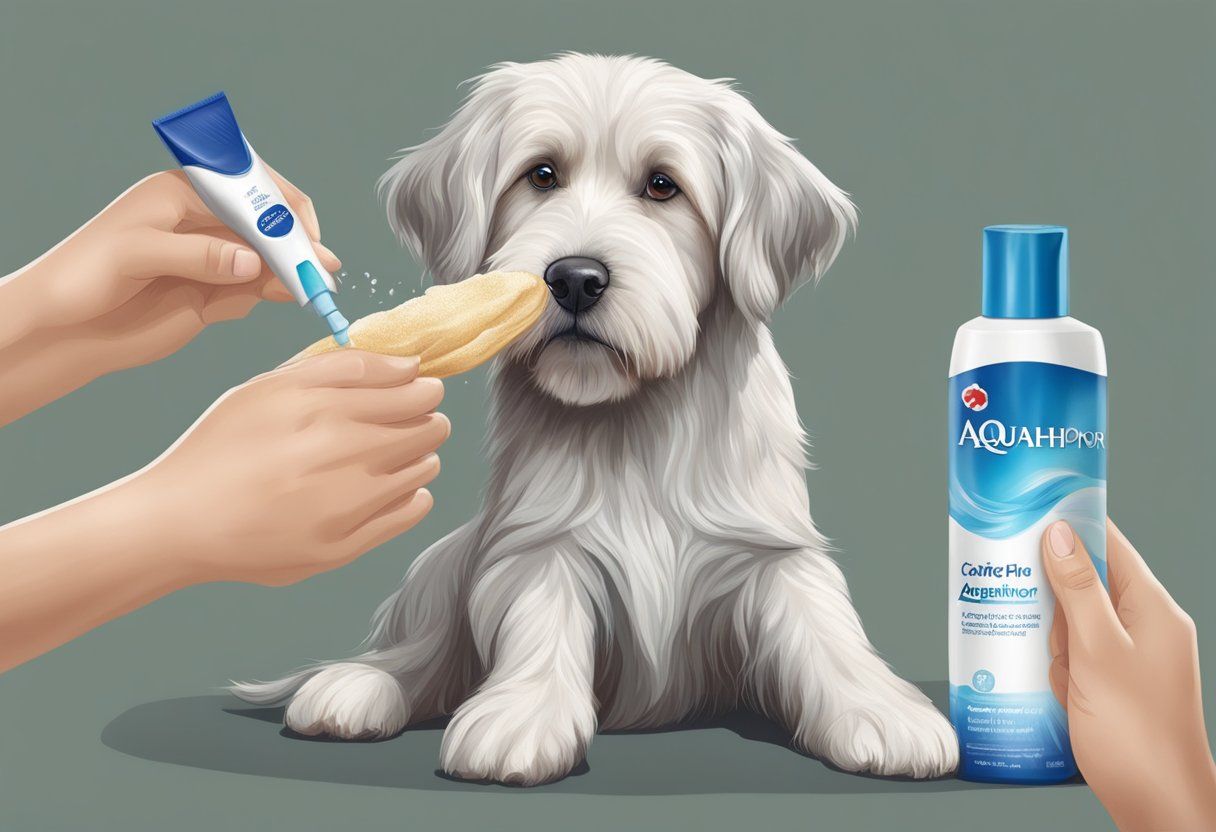
Vet Reviewed

By: Sarah Hodgson
February 13, 2024
- Posted in Dogs
Table of Contents
While Aquaphor is not toxic, ingestion in large amounts could potentially lead to gastrointestinal upset or other issues.
Aquaphor is a widely used ointment for treating dry, cracked, or irritated skin in humans. Dog owners often face similar skin issues with their dogs, particularly in harsh weather conditions or with certain skin conditions. It raises the question whether Aquaphor, a product suitable for human use, is also safe and effective for application on dogs. Is it safe for dogs?
Is Aquaphor Safe For Dogs?
While Aquaphor is generally non-toxic to dogs, ingestion in large quantities can lead to gastrointestinal issues such as vomiting and diarrhea. This concern arises when dogs lick the ointment off their skin, which can occur if applied to areas within reach of their tongue.
- Ingestion: In small amounts, Aquaphor is considered safe if accidentally licked by a dog. However, it should not be allowed to ingest in large quantities.
- Non-toxic: The ointment is non-toxic, so incidental small amounts ingested are unlikely to cause harm.
Proper Usage
Aquaphor is typically safe for dogs when used for its intended purpose, which is external application on minor skin irritations. Consulting a veterinarian before use is recommended to ensure it is appropriate for a dog's specific condition.
- External Use: Intended solely for external use on areas such as paws and noses, where dryness or cracking may occur.
- Veterinarian Approval: Always check with a vet prior to application, especially on open wounds or severe skin conditions.
Known Allergies and Reactions
While allergies to Aquaphor are not common, some dogs may experience an allergic reaction leading to irritation or further skin irritations. Monitoring the dog after application for any signs of discomfort is crucial.
- Allergies: Be alert for signs of an allergic reaction, such as redness, itchiness, or skin rashes.
- Irritation: If any irritation arises, immediately discontinue use and consult a veterinarian.
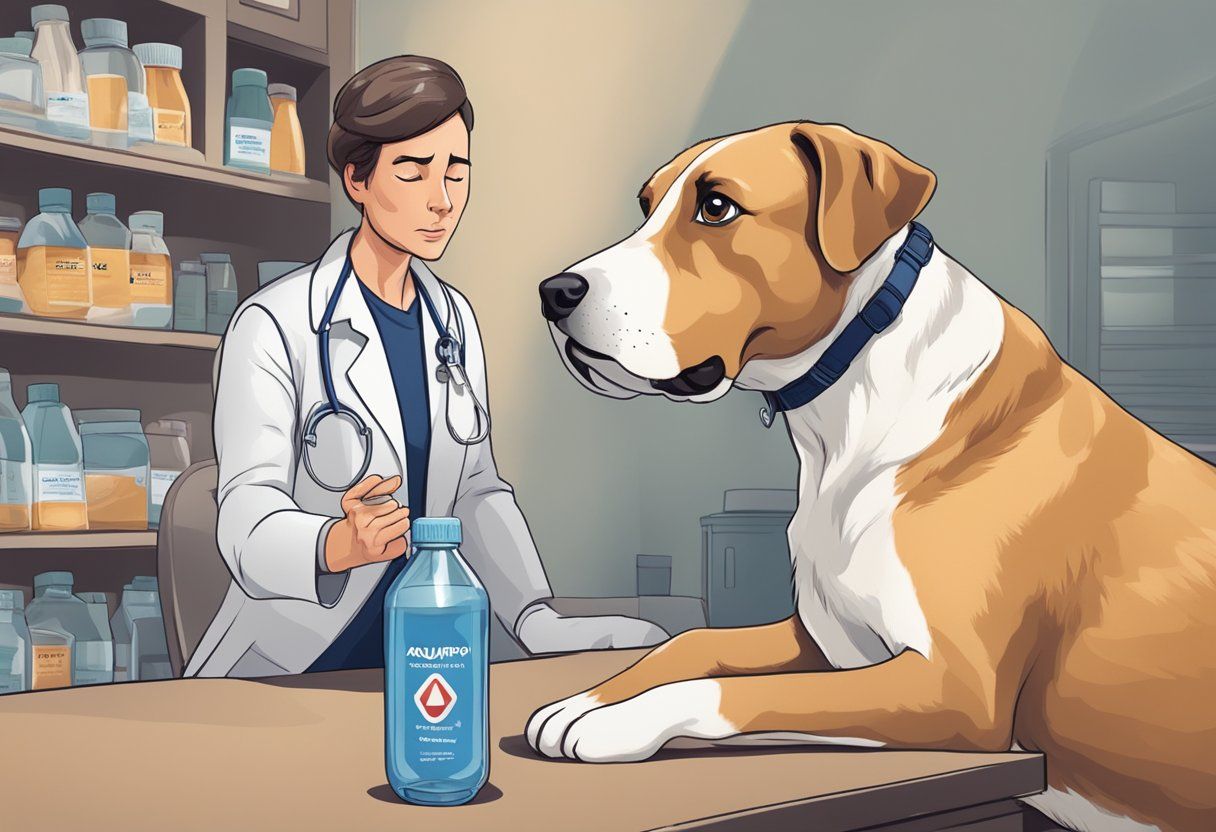
Benefits of Aquaphor for Dogs
Aquaphor, a multipurpose ointment, is known for its ability to moisturize and promote healing in dry or damaged skin. Its use on dogs can be particularly beneficial for a range of skin problems.
Moisturizing Dry Skin
Aquaphor acts as an effective moisturizer for dogs with dry skin. It helps to moisturize and heal dry areas, such as dry noses and any general dry skin. Its hydrating properties make it suitable for regular use to maintain healthy skin.
- Areas to apply: Dry noses, general skin dryness
- Frequency: As needed to maintain hydration
Treating Cuts and Scrapes
Using Aquaphor on minor cuts and scrapes can be beneficial. It assists in keeping the wound moist, which can promote faster healing and prevent infection. For dog wounds needing gentle care, Aquaphor can provide a protective layer.
- Application: Clean area, then apply a thin layer
- Healing: Keeps the wound environment optimal for recovery
Healing Paw Pads
Dogs' paw pads often become rough or cracked, especially after walking on harsh surfaces. Aquaphor serves as a healing agent for damaged paw pads, helping to soothe peeling and cracked paws.
- Use: After walks or when pads appear damaged
- Outcome: Aids in recovery and maintains paw pad integrity
Limiting Irritation and Itching
Skin irritation and itchiness in dogs can be alleviated with Aquaphor. The ointment forms a barrier that protects the skin from further irritation, providing relief from itchiness and reducing ongoing skin irritation.
- Benefits: Reduced itchiness and protection from irritants
- Application: Apply to irritated areas to soothe skin
How To Apply Aquaphor To Dogs?
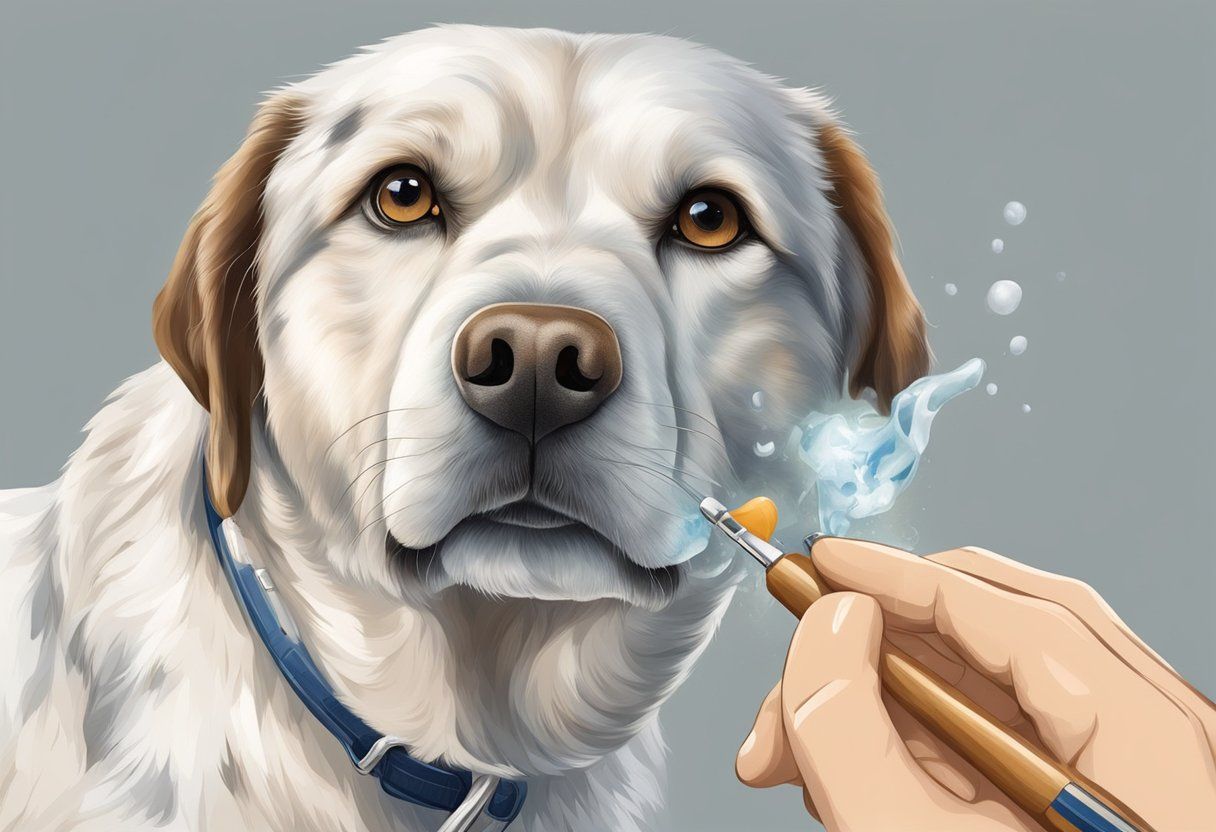
When it comes to the use of Aquaphor on dogs, adhering to proper application guidelines ensures safety and effectiveness. The following instructions provide a clear method for preparing the area, determining the correct amount and frequency of application, and pinpointing the appropriate regions on the dog's body for treatment.
Preparation and Cleaning
Before applying Aquaphor, it is crucial to clean the affected area. Follow these steps:
- Gently clean: Use a soft cloth and warm water to gently cleanse the area, ensuring removal of any dirt or debris.
- Dry thoroughly: Pat the area dry with a clean towel, avoiding any harsh rubbing that may irritate the skin.
Amount and Frequency
Apply the correct dosage of Aquaphor to the dog's skin with care:
- Small quantity: Start with a pea-sized amount to avoid over-application.
- Routine application: Apply two to three times per day, or as directed by a veterinarian.
Areas of Application
Aquaphor can be used on various parts of the dog's body:
- Paw pads: Apply to moisturize and soften cracked or rough paw pads.
- Nose: Helps with a dry or crusty nose, but be careful to prevent ingestion.
- Ears and lips: Effective for dry spots but avoid inner ear areas.
- Hot spots and minor wounds: Promotes healing when used on clean skin, but watch for signs of infection.
- Elbows and bum: Excellent for dry elbows and irritated skin near the bum, protecting against harsh surfaces.
Remember, when using any skin care product like Aquaphor, it is important to monitor your dog's reaction and consult with a vet if you have concerns about its use.
Risks of Ingestion
While Aquaphor is generally safe for topical use on dogs, ingestion can lead to stomach upset and other gastrointestinal symptoms. Ingesting a large amount may require attention from a veterinarian.
What to Do if Ingested
If a dog has ingested Aquaphor, monitor their behavior and check for signs of gastrointestinal distress. In cases of significant ingestion, contact a veterinarian promptly for advice. Offer water to the dog to help mitigate potential irritation.
- Immediate Response:
- Verify amount ingested
- Provide water
- Contact a veterinarian for advice
Signs of Stomach Irritation
Ingesting Aquaphor may result in symptoms indicative of stomach upset. Dogs may experience vomiting or diarrhea, which are signs of gastrointestinal irritation.
Symptoms to Watch For:
- Vomiting
- Diarrhea
- Lethargy
- Loss of appetite
If these symptoms occur, seeking veterinary care is crucial to ensure the health and well-being of the dog.
Aquaphor Alternatives for Dogs
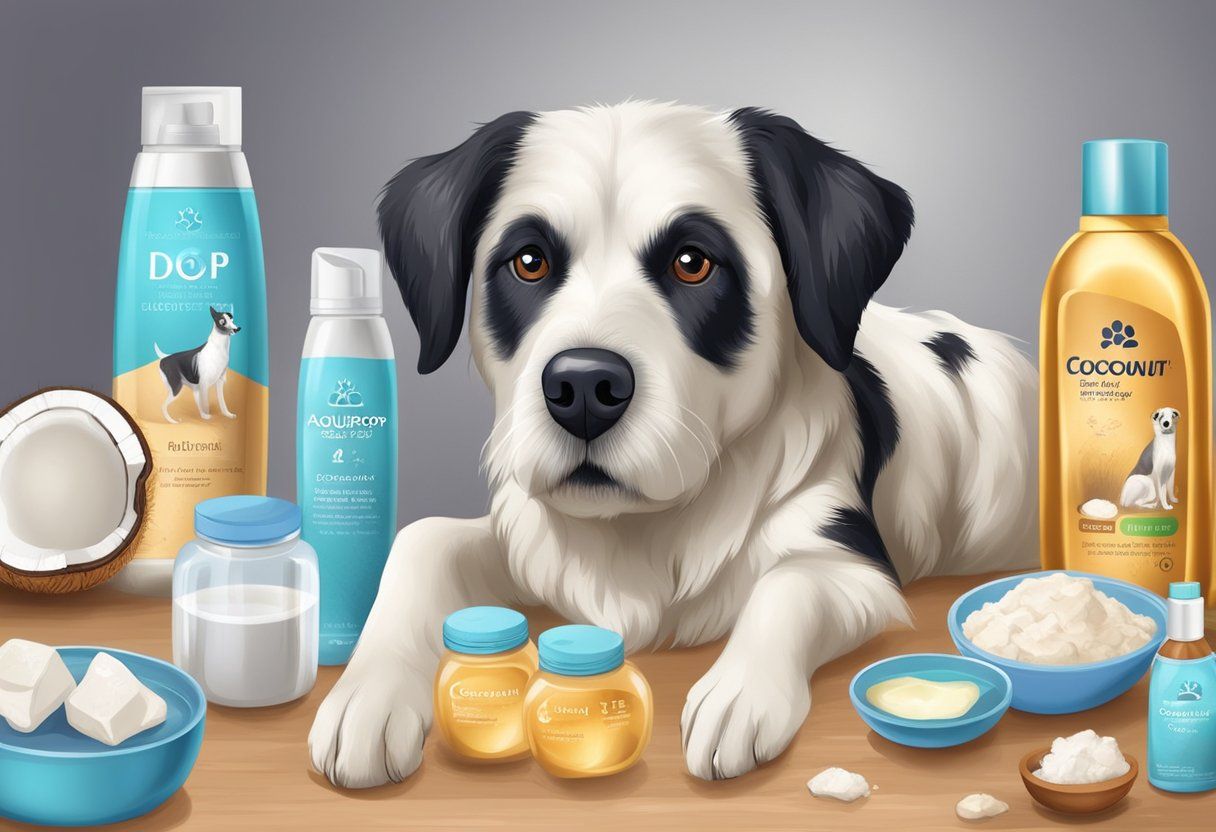
When choosing a skin and paw treatment for dogs, it's important to consider alternatives that are safe and specifically formulated for canine use, avoiding ingredients that could be harmful if ingested.
Natural and Dog-Specific Balms
Natural Balms: Many dog-specific balms are formulated without petroleum jelly or mineral oil, instead using natural ingredients like lanolin, glycerin, and panthenol. These ingredients provide a moisture barrier and have soothing properties, making them suitable for a dog's skin and paws.
- Lanolin: Acts as an excellent emollient that protects the dog's skin.
- Glycerin: Attracts moisture to maintain hydration.
- Panthenol: Helps with skin recovery and provides soothing effects.
Dog-Specific Options: Paw balms are designed for dogs to safely use on their paws, often containing a mix of natural waxes and oils to provide a safe barrier against rough surfaces and extreme temperatures. They can also offer anti-inflammatory properties to help with irritated skin.
- Paw Balms: Created to protect and heal cracked paws with safe ingredients.
- Booties: Offer physical protection and barrier from harsh surfaces and temperatures.
Home Remedies
Simple Mixtures: In a pinch, diluted solutions of ingredients like apple cider vinegar, which has natural anti-inflammatory properties, can be used to help with minor skin irritations.
- Apple Cider Vinegar: Dilute with water and apply to affected areas to reduce inflammation.
Barrier Options: For a physical barrier, consider using booties for protection when outdoors, or even inside if floors are causing dryness.
- Booties: Physical barrier to protect against environmental factors.
- E-Collars: Prevent dogs from licking affected areas to allow healing.
Remember, it's essential to ensure the safety of any substance used on a dog, considering their tendency to lick their skin and paws. Ingredients should be non-toxic and if in doubt, consult with a veterinarian.
When to Consult a Veterinarian
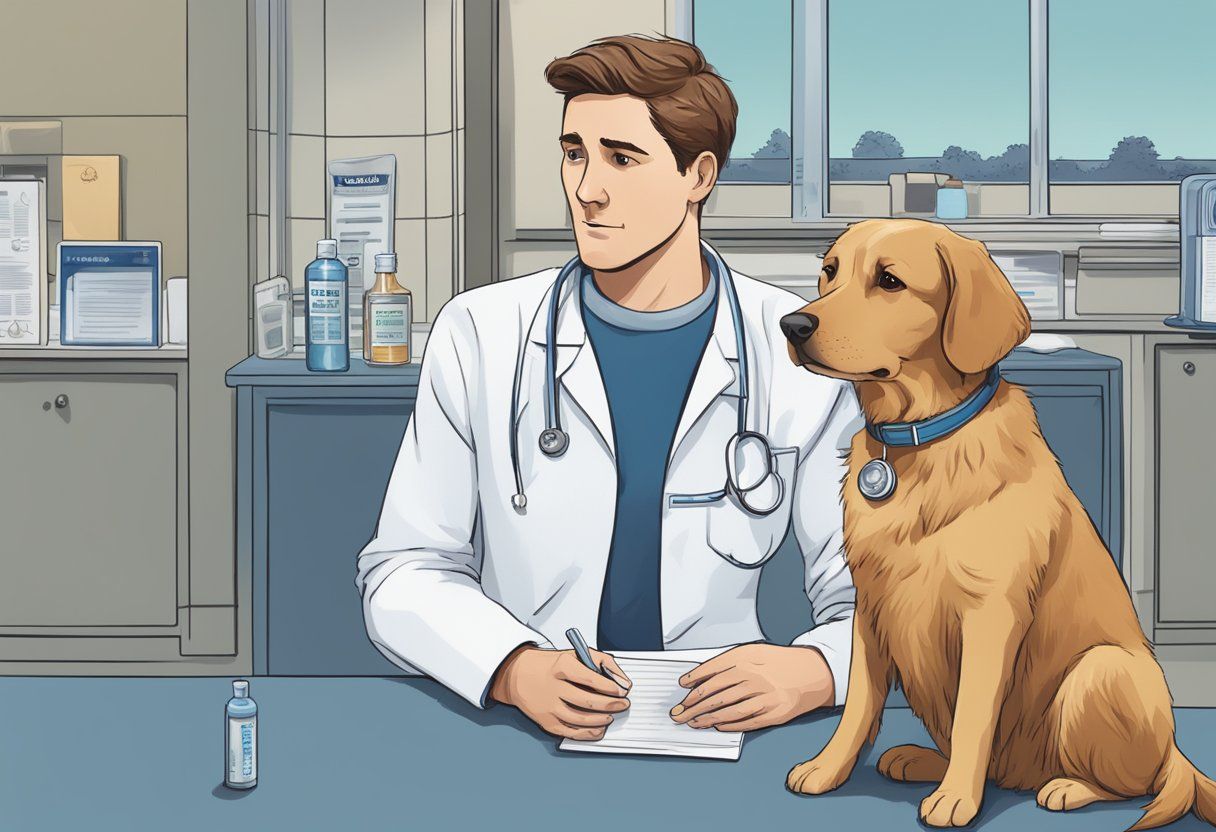
Before applying Aquaphor or managing any skin issues in dogs, it is crucial to understand when to seek the guidance of a vet. Certain symptoms and conditions necessitate professional medical attention to prevent complications.
Any skin condition in a dog that does not resolve with basic care or continues to recur warrants a veterinary consultation. Skin problems like chronic sores, including pressure sores, eczema, and unidentified skin conditions, could be indicative of an underlying issue that requires medical intervention. When a dog has persistent itchiness that leads to scratching and possible skin infections, or if there's noticeable inflammation, a veterinarian's expertise is essential. They can diagnose the condition accurately and prescribe appropriate treatments or medications.
Post-Surgical Care
If a dog has recently undergone surgery and has stitches, it's important to follow the vet's post-surgical care instructions. Do not apply Aquaphor or any ointment to the surgical site unless advised by your vet.
Improper care can lead to infection and hinder the healing process. If the operated area shows signs of redness, swelling, discharge, or if the dog appears to be in discomfort, contact a vet immediately. They can assess if there's an infection or an allergic reaction to materials used during surgery.
Severe Reactions
While mild reactions to products can be common, severe reactions such as intense itching, swelling, hives, or respiratory difficulties could indicate an allergic reaction and should prompt immediate veterinary attention. Dogs with a known history of allergies should only have products applied to their skin after a vet has been consulted, to minimize the risk of a severe allergic response. A vet can provide emergency treatment and advise on safe products for future use.
The Bottom Line
So there you have it, Aquaphor is safe to use on dogs. It can be used in the same way we humans use it on ourselves. Just remember to be careful as there is toxicity involved if a dog happens to ingest it. Stay safe!
Frequently Asked Questions
Is Aquaphor safe to apply on a dog's irritated skin?
They can use Aquaphor on a dog's irritated skin in moderation. It can provide a protective barrier, but it's important to avoid areas the dog might lick excessively.
What is the proper way to use Aquaphor on a dog's paws?
To use Aquaphor on a dog's paws, they should apply a small amount on the pads, especially in cold weather, to prevent cracking. Ensure the dog does not ingest it by licking.
Can applying Aquaphor help with flea irritation on dogs?
While Aquaphor can soothe skin irritation, it is not designed to treat flea infestations. For flea irritation, they primarily need to use veterinarian-recommended flea treatments.
What's the recommended approach to treating dog wounds with Aquaphor?
For minor cuts and scrapes, Aquaphor can keep a dog's wound moist and promote healing. However, they should first clean the wound and consult a vet for deep or infected wounds.

Subscribe to Petfluence!
Get updates on the latest posts and more from Petfluence straight to your inbox.